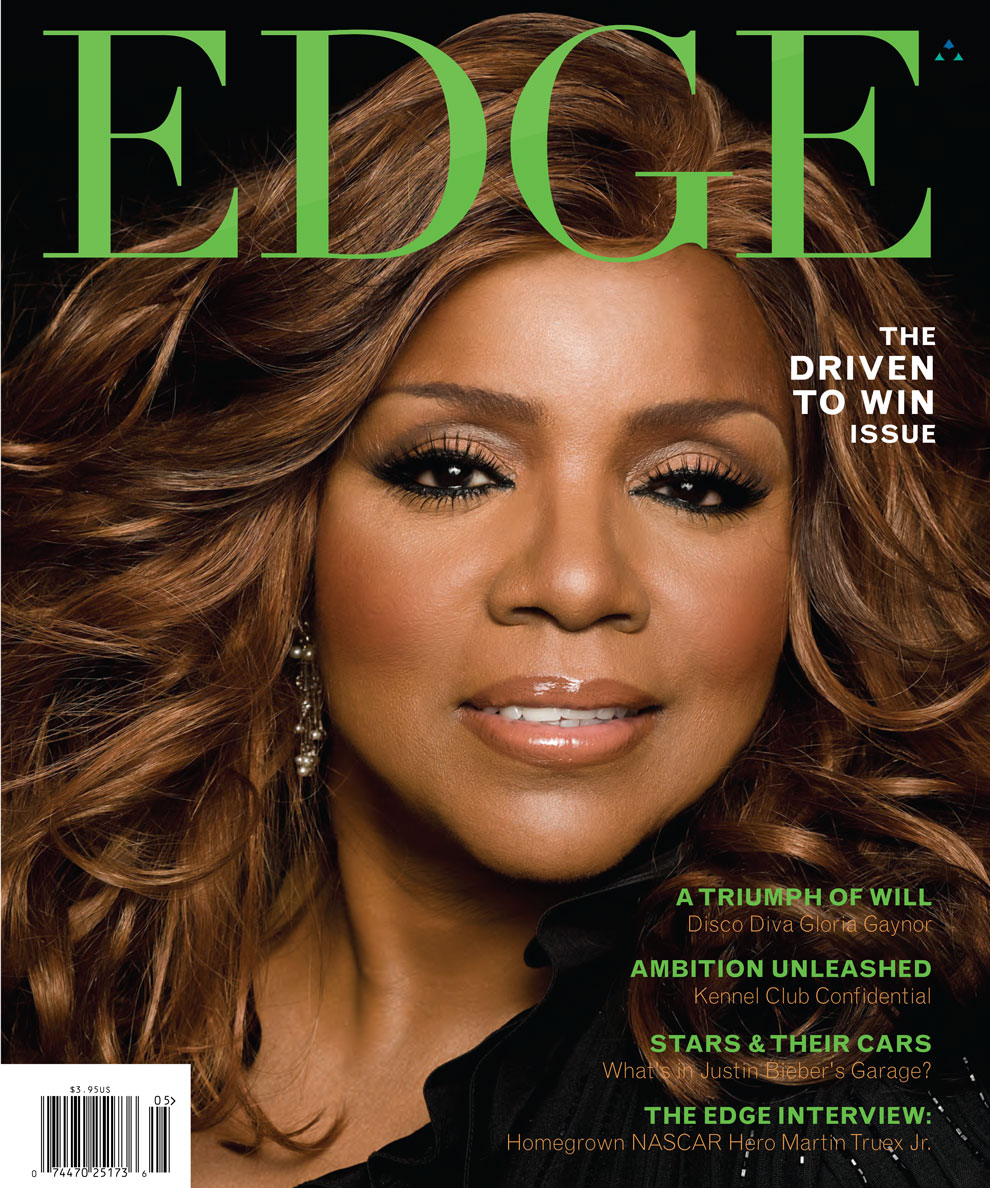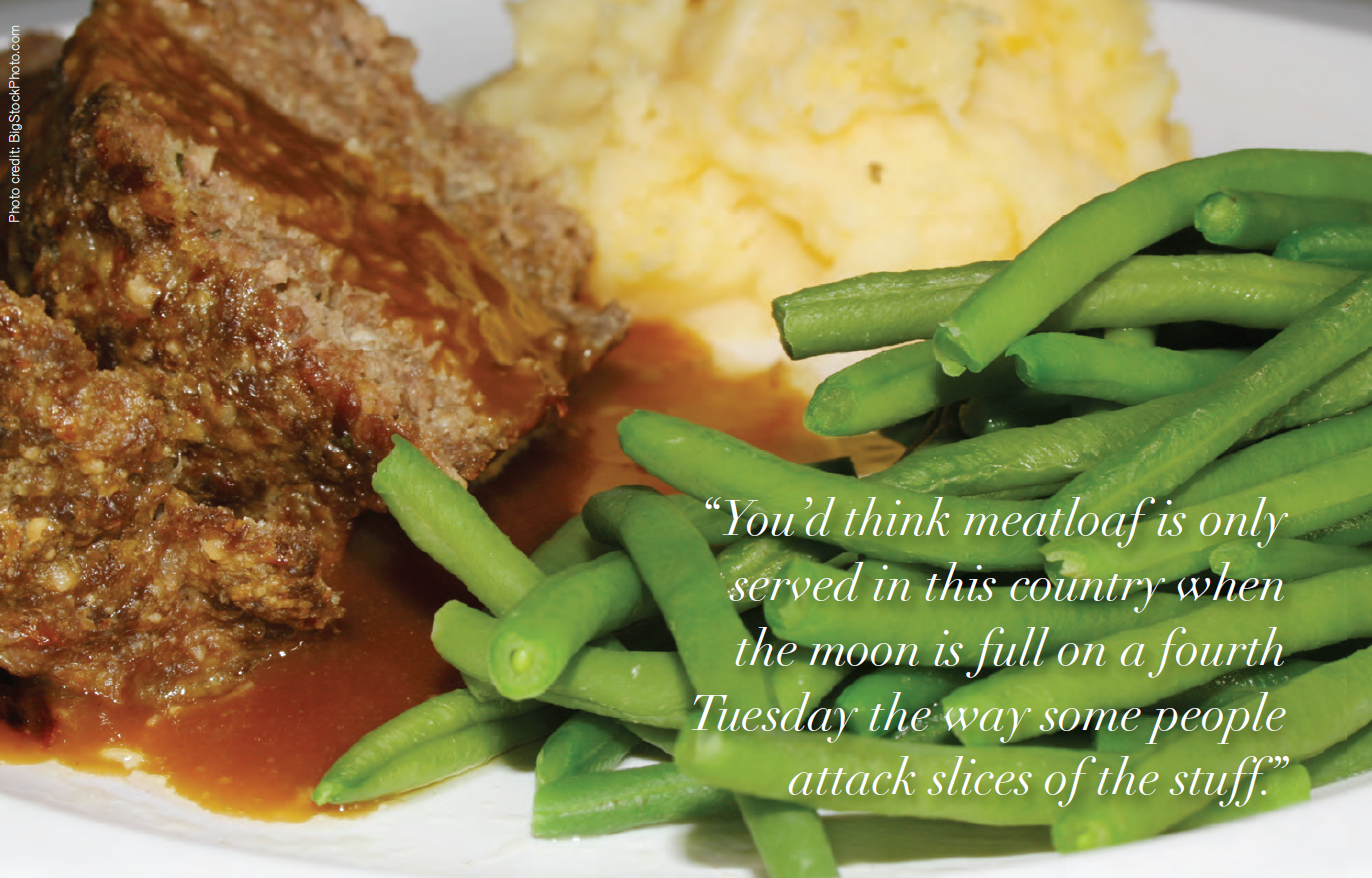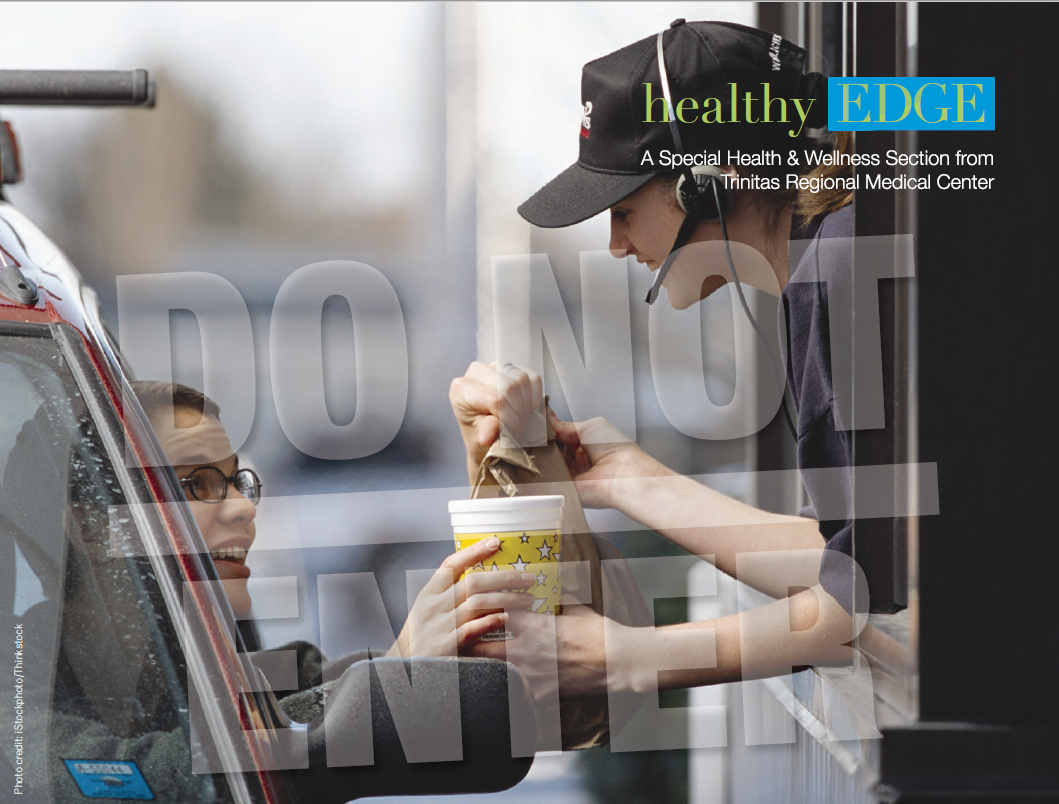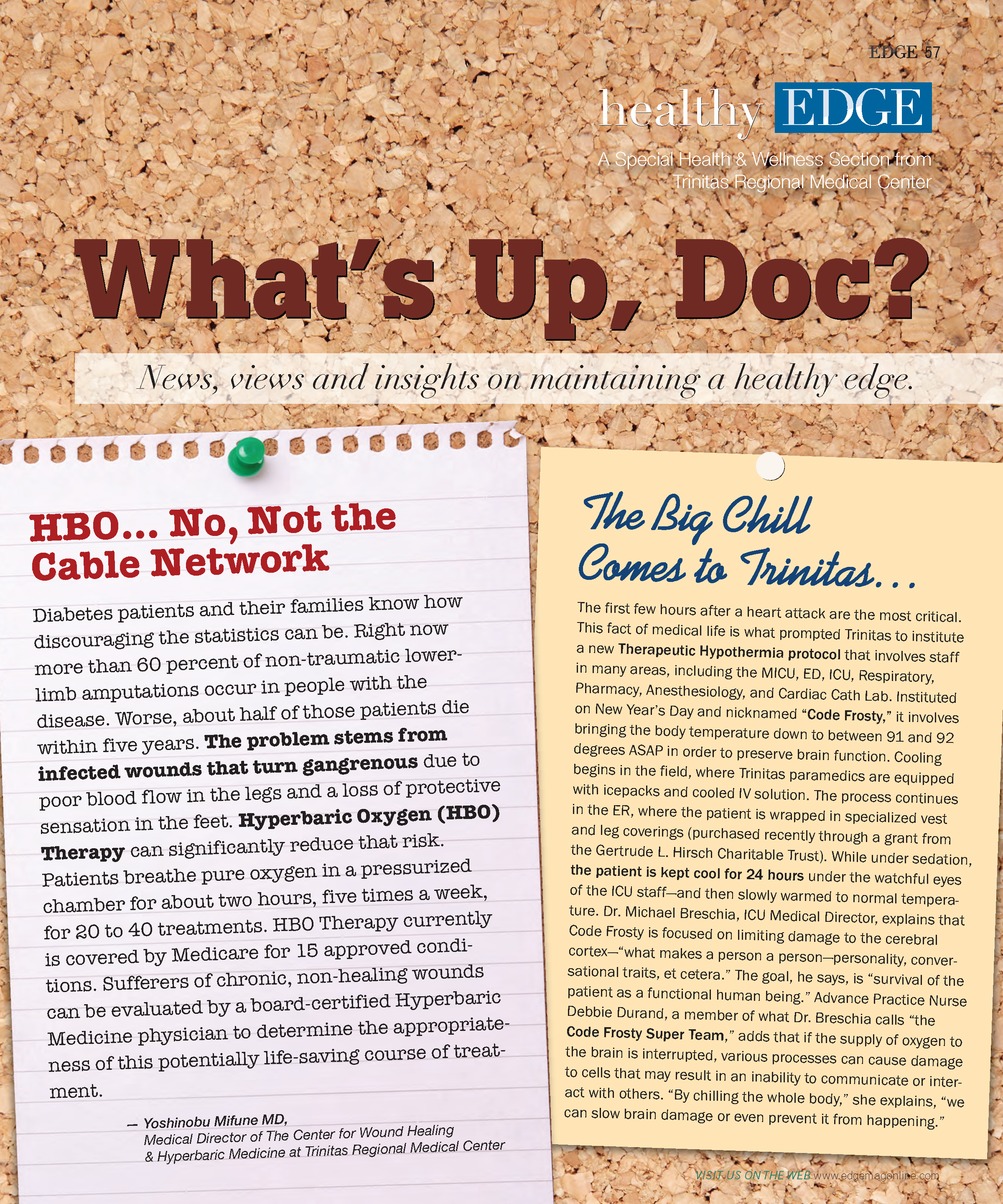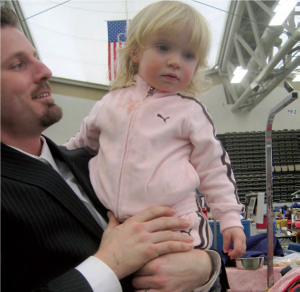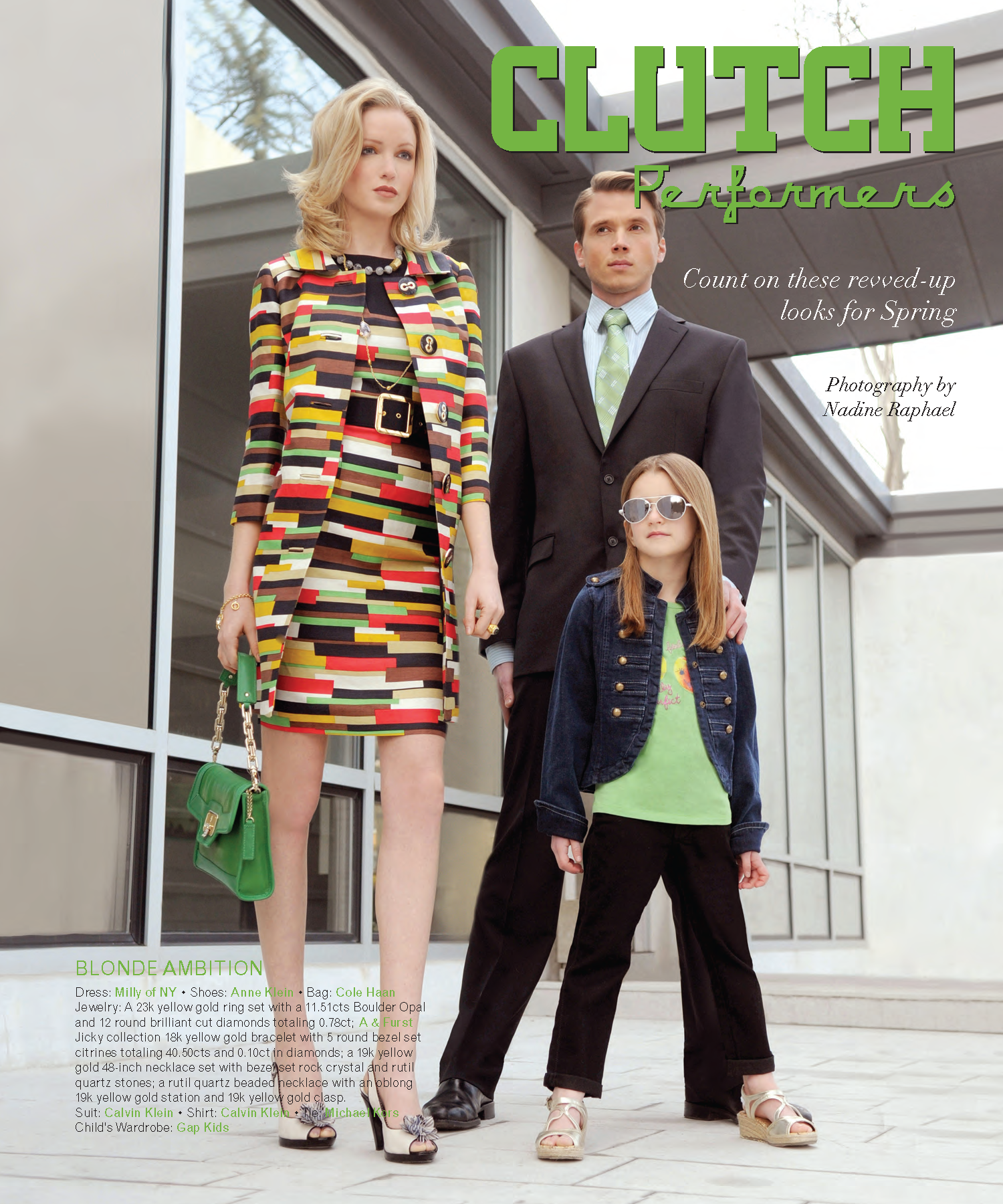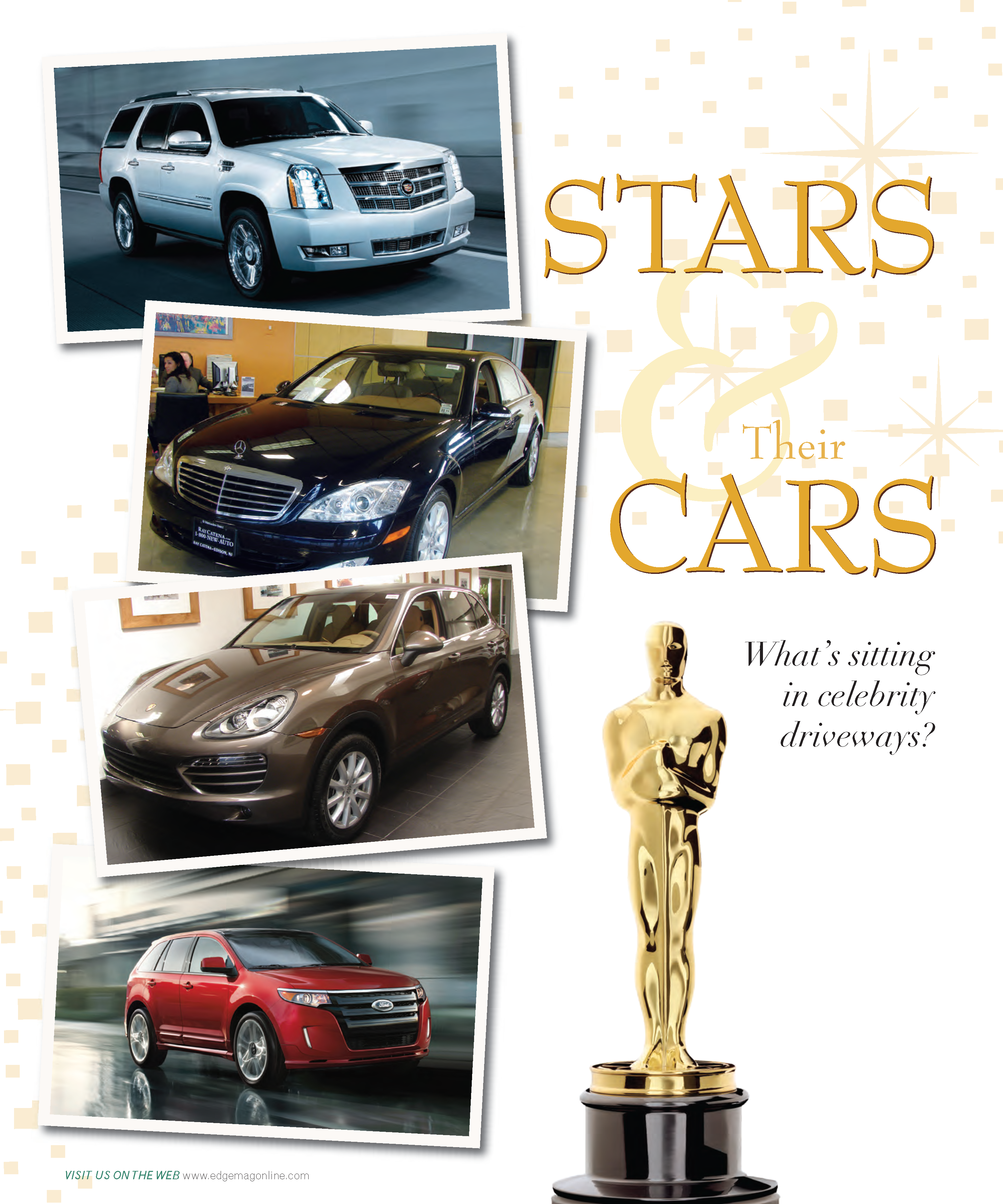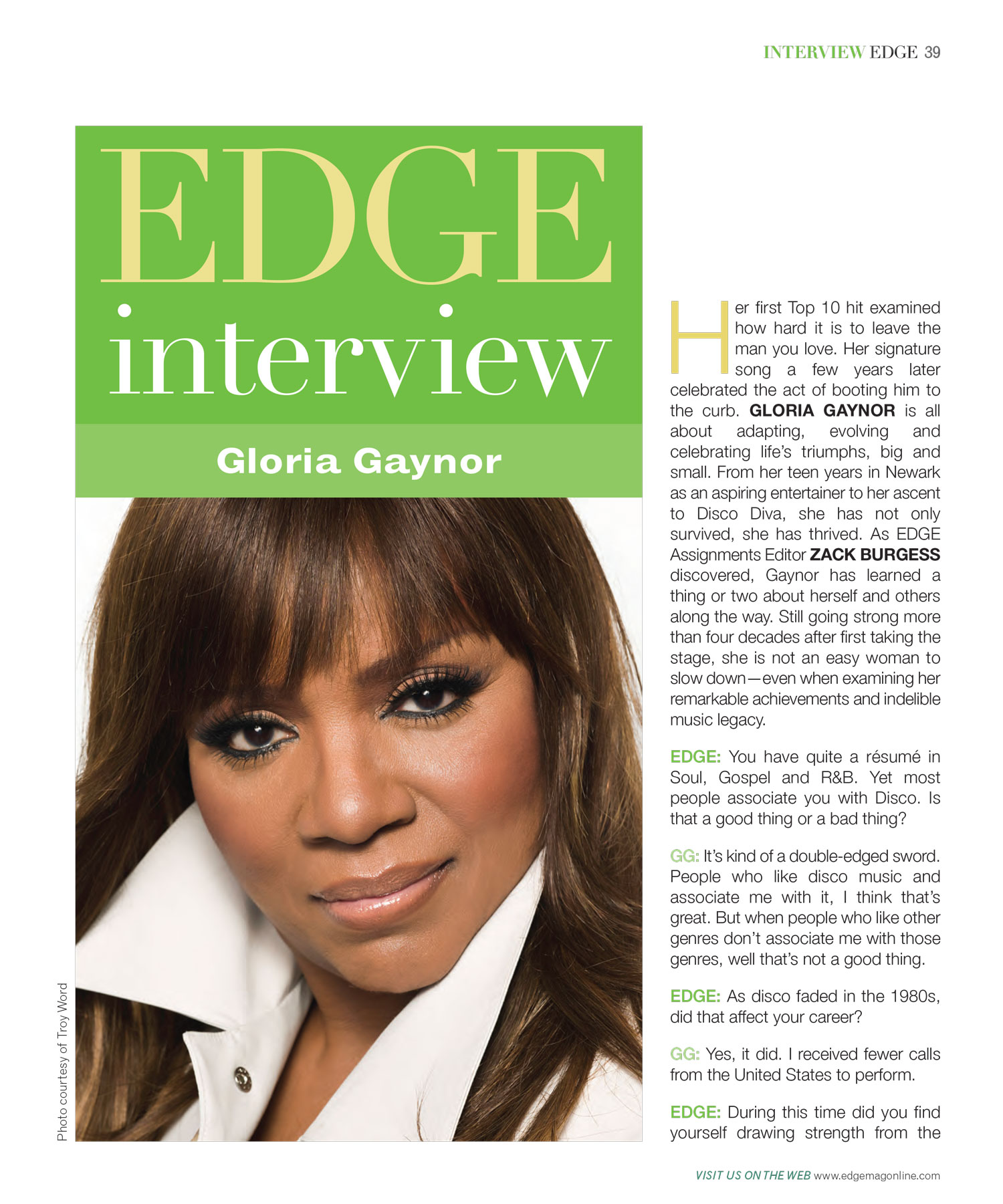A Trio of Westfield Winners
If at first you succeed, why not keep at it? It’s hard to remember a time when Theresa’s wasn’t around to feed families who realize they can’t make meal ends meet in between soccer and homework. Or couples who commute and, on occasion, want more than takeout rotisserie chicken and strip-mall Chinese. Or 20-somethings just off the train who are looking for a gathering place with more eats than drinks. The successful formula at this Italian-leaning, something-for-everyone restaurant on Elm Street encouraged founder and guiding force Robert Scalera to open a Southwestern-style spot called Mojave Grill, a mere blink away in downtown Westfield. Now folks craving a good bowl of black bean soup, quesadillas with punch and pizzazz, and chile-infused main courses had a downtown alternative in the same come-as-you-are vein as Theresa’s. And when it seemed there was a niche not yet explored, Isabella’s American Bistro was born in yet another storefront on Elm. It borrows culinary themes now and again from its siblings, but does have a much-loved jazzed-up meatloaf, wasabi-crusted seafood specials and a fruited bread pudding locals can’t do without. In other words, bistro style with an American-food attit ude. An old friend from Westfield told me her four kids might have gone hungry during their high school days if not for Theresa’s and Mojave. They were at one or the other— sometimes both—every week. They’d all zero in on their favorite dishes, order and feel sated. Tara King, catering manager for all Scalera’s restaurants, says the faithful indeed do pop in two, three nights a week. And that doesn’t include lunch stops, since they all serve midday meals as well. Curious? Come dine with us then. We took in dinner at each of the Westfield mainstays to catch the individual flavor of each place. Neighborhood joints though they may be, there’s a sense of pride in the crafting of dishes that’s not always apparent in restaurants with a similar purpose and point of view. Ingredients are fresh. Stocks are made in house, not purchased in vats from food distributors. Though there are no ahead-of-time reservations to be made, there is a nightly call-ahead system that keeps table waits to a minimum. The restaurants routinely are packed to the gills, but on most occasions, there’s commendable flow from kitchen to table. Scalera’s restaurants are well run.
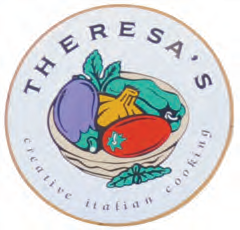 THERESA’S The always-smart partnership of shellfish and beans makes for a simple, yet engaging starter. Shrimp are marinated, then grilled, and plated with a white bean salad. The pair is united by a sweet flash of roasted red pepper and the herbal kick of a pesto-laced oil. Flashy and fussy? No. Soulful and satisfying? Yes. So is a local favorite pasta dish, the now-classic penne with vodka sauce. It’s so often tired and trite, laden with massive amounts of sauce that prompt giggles among teens, who think they’ll get a buzz from a sauce labeled “vodka.” Sorry. There’s a vaguely astringent quality to the spirited sauce, but what gives Theresa’s version of the dish a lift above the norm is the carbonara-like addition of crumbled pancetta and sweet peas. Potent in a non-alcoholic way. It’s possible that riots would ensue in genteel Westfield if the asiago-crusted chicken ever were taken off Theresa’s menu. Our polite server on this night said there was no chance of that. Folks love the cheese-on-cheese aspect of the dish, what with mozzarella layered in the mix. It’s all balanced by a dose of tomato and a garlicky cream sauce. If you’re looking for a sweet-tart sensation, give the balsamic-and apricot-glazed pork tenderloin a go. It’s got the appeal of something barbecued as well as a couple of hearty standbys on the side in garlic-licked mashed potatoes and a tangle of spinach. The dessert of choice? A dense, yet light, flourless chocolate cake that demands, and receives, a dollop of vanilla gelato.
THERESA’S The always-smart partnership of shellfish and beans makes for a simple, yet engaging starter. Shrimp are marinated, then grilled, and plated with a white bean salad. The pair is united by a sweet flash of roasted red pepper and the herbal kick of a pesto-laced oil. Flashy and fussy? No. Soulful and satisfying? Yes. So is a local favorite pasta dish, the now-classic penne with vodka sauce. It’s so often tired and trite, laden with massive amounts of sauce that prompt giggles among teens, who think they’ll get a buzz from a sauce labeled “vodka.” Sorry. There’s a vaguely astringent quality to the spirited sauce, but what gives Theresa’s version of the dish a lift above the norm is the carbonara-like addition of crumbled pancetta and sweet peas. Potent in a non-alcoholic way. It’s possible that riots would ensue in genteel Westfield if the asiago-crusted chicken ever were taken off Theresa’s menu. Our polite server on this night said there was no chance of that. Folks love the cheese-on-cheese aspect of the dish, what with mozzarella layered in the mix. It’s all balanced by a dose of tomato and a garlicky cream sauce. If you’re looking for a sweet-tart sensation, give the balsamic-and apricot-glazed pork tenderloin a go. It’s got the appeal of something barbecued as well as a couple of hearty standbys on the side in garlic-licked mashed potatoes and a tangle of spinach. The dessert of choice? A dense, yet light, flourless chocolate cake that demands, and receives, a dollop of vanilla gelato. 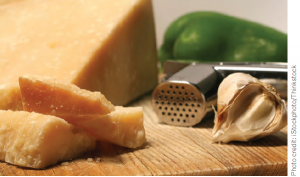
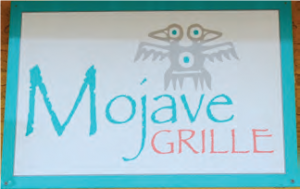 MOJAVE GRILL There was a special soup on tap the night of our visit that intrigued: caramelized onion and potato, punctuated by the freshness of scallions and topped with crisped onions that have been shot through with cayenne. Of all the Scalera concepts, I’ve liked Mojave the best. There’s bolder seasoning and more of a distinctive personality on the plates, particularly on the specials’ roster. This soup crystallizes why?: The onion-potato soup is thick, rich and calls for counterpoint, which it gets in the rawness of the scallions and the heat of the crunchy cayenne’d onions. The signature black bean soup needs its jalapeno spike, as well as the luxurious lime crema, chunks of avocado and chopped, spiced tomato. Extra dimension in a dish
MOJAVE GRILL There was a special soup on tap the night of our visit that intrigued: caramelized onion and potato, punctuated by the freshness of scallions and topped with crisped onions that have been shot through with cayenne. Of all the Scalera concepts, I’ve liked Mojave the best. There’s bolder seasoning and more of a distinctive personality on the plates, particularly on the specials’ roster. This soup crystallizes why?: The onion-potato soup is thick, rich and calls for counterpoint, which it gets in the rawness of the scallions and the heat of the crunchy cayenne’d onions. The signature black bean soup needs its jalapeno spike, as well as the luxurious lime crema, chunks of avocado and chopped, spiced tomato. Extra dimension in a dish 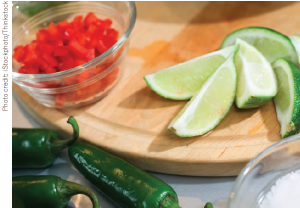 is why we eat out, so we can experience what we might not do for ourselves at home. We tend not to make tuna ceviche at home very often, either, which is why Mojave’s faithful snag the chunks of yellowfin made brazen by ginger and pasilla chilies and then soothed by cooling cucumbers and avocado. Tune into the pulled chicken enchiladas and, if you’re in the mood for comfort food, for the ancho mole, red rice and black beans with a swath of cotija cheese and sultry crema. They’re just about as harmonic as a chorus from The Mamas and The Papas. If you’re craving quesadillas, nab the blackened chicken number that comes cosseted with a Monterey Jack-esque cheese and a generous slather of avocado-basil aioli. I wasn’t taken with the yucca-crusted grouper, a nightly special, for the grouper was overcooked, the taste of the yucca not doing a thing for the fish, and the red pepper puree overwhelming. The one-two punch of seared flank steak topped with a vigorous chimichurri hit on all cylinders, though—and it just might make you whip up your own take on the parsley-garlic-hot pepper-vinegar sauce this summer when you’re grilling a flank steak in your backyard.
is why we eat out, so we can experience what we might not do for ourselves at home. We tend not to make tuna ceviche at home very often, either, which is why Mojave’s faithful snag the chunks of yellowfin made brazen by ginger and pasilla chilies and then soothed by cooling cucumbers and avocado. Tune into the pulled chicken enchiladas and, if you’re in the mood for comfort food, for the ancho mole, red rice and black beans with a swath of cotija cheese and sultry crema. They’re just about as harmonic as a chorus from The Mamas and The Papas. If you’re craving quesadillas, nab the blackened chicken number that comes cosseted with a Monterey Jack-esque cheese and a generous slather of avocado-basil aioli. I wasn’t taken with the yucca-crusted grouper, a nightly special, for the grouper was overcooked, the taste of the yucca not doing a thing for the fish, and the red pepper puree overwhelming. The one-two punch of seared flank steak topped with a vigorous chimichurri hit on all cylinders, though—and it just might make you whip up your own take on the parsley-garlic-hot pepper-vinegar sauce this summer when you’re grilling a flank steak in your backyard.
 As I scooped up the last of the spiced walnuts in the orange-and-arugula salad at ISABELLA’S, I sensed an impatience on the part of my dining companion. It took no special powers of deduction for me to realize my pal wanted our bacon- Cheddar meatloaf now. It soon arrived and began to disappear. I managed to score two bites and reasonable enough spoonfuls of mashed potatoes and creamed spinach, both of which benefit from gravy chunky with shallots. You’d think meatloaf is only served in this country when the moon is full on a fourth Tuesday the way some people attack slices of the stuff. There’s no denying the appeal of Isabella’s meatloaf. (Which has a lot to do with an abundance of bacon, I suspect.) While the attack on the meatloaf was taking place, I took advantage of an uninterrupted spell communing with the night’s special ravioli: pasta pockets stuffed with goat cheese and roasted red peppers, then drizzled with a vibrant tomato-pesto sauce. There’s an accord reached on the fettuccine tossed
As I scooped up the last of the spiced walnuts in the orange-and-arugula salad at ISABELLA’S, I sensed an impatience on the part of my dining companion. It took no special powers of deduction for me to realize my pal wanted our bacon- Cheddar meatloaf now. It soon arrived and began to disappear. I managed to score two bites and reasonable enough spoonfuls of mashed potatoes and creamed spinach, both of which benefit from gravy chunky with shallots. You’d think meatloaf is only served in this country when the moon is full on a fourth Tuesday the way some people attack slices of the stuff. There’s no denying the appeal of Isabella’s meatloaf. (Which has a lot to do with an abundance of bacon, I suspect.) While the attack on the meatloaf was taking place, I took advantage of an uninterrupted spell communing with the night’s special ravioli: pasta pockets stuffed with goat cheese and roasted red peppers, then drizzled with a vibrant tomato-pesto sauce. There’s an accord reached on the fettuccine tossed 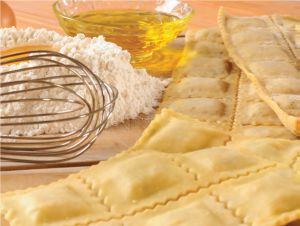 with baby shrimp, corn, sweet peas, sundried tomatoes and mushrooms, all of which is bound by a chipotle-charged cream sauce. This is vintage Scalera and what I think his restaurants do best: Take a bunch of familiar ingredients, a concept that’s not off-putting, then jazz it all up to the level of food you expect when you go out to eat. My wish for Isabella’s? That it would pair a cut of beef other than filet mignon with a crust of peppercorns. That intense coating would work much better with a chewier, heartier flavor, such as strip steak or rib-eye, than it does with a mildmannered filet. But all ends well here with a banana-studded bread pudding streaked with caramel and served with vanilla ice cream. It usually does at Westfield’s trio of winners. EDGE
with baby shrimp, corn, sweet peas, sundried tomatoes and mushrooms, all of which is bound by a chipotle-charged cream sauce. This is vintage Scalera and what I think his restaurants do best: Take a bunch of familiar ingredients, a concept that’s not off-putting, then jazz it all up to the level of food you expect when you go out to eat. My wish for Isabella’s? That it would pair a cut of beef other than filet mignon with a crust of peppercorns. That intense coating would work much better with a chewier, heartier flavor, such as strip steak or rib-eye, than it does with a mildmannered filet. But all ends well here with a banana-studded bread pudding streaked with caramel and served with vanilla ice cream. It usually does at Westfield’s trio of winners. EDGE
 Editor’s Note: Andy Clurfield is a former editor of Zagat New Jersey. The longtime food critic for the Asbury Park Press also has been published in Gourmet, Saveur and Town & Country, and on epicurious.com.
Editor’s Note: Andy Clurfield is a former editor of Zagat New Jersey. The longtime food critic for the Asbury Park Press also has been published in Gourmet, Saveur and Town & Country, and on epicurious.com.
A glamorous golf getaway is closer than you think.
As a rule, it’s wise to steer clear of playing 18 holes with any golf course owner who tells you one of two things: 1) His handicap is higher than the national debt; 2) He rarely gets in a round at the course he owns. Why is it prudent to avoid such a fate? Chances are, when you walk off the 18th green and settle up, your wallet  will be noticeably lighter and you’ll feel like you just spent four hours in an overgrown cow pasture. That being said, Ken Wang isn’t your normal golf course owner. And Pound Ridge Golf Club in Westchester County is hardly your normal course. “It has a sublime rhythm,” says Wang, a married father of three sons, MIT grad and brother of famed fashion designer Vera Wang. “You remember every hole individually. The course has a certain harmony and serenity.” “May and June are beautiful here,” adds Todd Leavenworth, the general manager at Pound Ridge GC, “but you can’t beat the fall. That’s the best time of year for the course.” When Pound Ridge is green and lush, it’s a sight to behold. Designed by the legendary Pete Dye, the course is about 90 minutes away from Central New Jersey. It’s distinguished by unique rock formations and breathtaking views, including several of the Long Island Sound. In typical Dye fashion, there is an exquisite logic to the course, a quality that appeals to the mathematician in Wang. “It’s hard to pinpoint my favorite holes,” he says. “I love number 7, number 10 and number 11. They are gorgeous.” Leavenworth gushes about the par-3 15th hole known as Headstone. “It’s spectacular,” he says. “There is white marble behind the green that slopes at about a 20-degree pitch. You can actually hit to the marble and have the ball roll back toward the hole.” One feature of Pound Ridge GC that golfers of all levels love is the number of tees per hole—a staple of any
will be noticeably lighter and you’ll feel like you just spent four hours in an overgrown cow pasture. That being said, Ken Wang isn’t your normal golf course owner. And Pound Ridge Golf Club in Westchester County is hardly your normal course. “It has a sublime rhythm,” says Wang, a married father of three sons, MIT grad and brother of famed fashion designer Vera Wang. “You remember every hole individually. The course has a certain harmony and serenity.” “May and June are beautiful here,” adds Todd Leavenworth, the general manager at Pound Ridge GC, “but you can’t beat the fall. That’s the best time of year for the course.” When Pound Ridge is green and lush, it’s a sight to behold. Designed by the legendary Pete Dye, the course is about 90 minutes away from Central New Jersey. It’s distinguished by unique rock formations and breathtaking views, including several of the Long Island Sound. In typical Dye fashion, there is an exquisite logic to the course, a quality that appeals to the mathematician in Wang. “It’s hard to pinpoint my favorite holes,” he says. “I love number 7, number 10 and number 11. They are gorgeous.” Leavenworth gushes about the par-3 15th hole known as Headstone. “It’s spectacular,” he says. “There is white marble behind the green that slopes at about a 20-degree pitch. You can actually hit to the marble and have the ball roll back toward the hole.” One feature of Pound Ridge GC that golfers of all levels love is the number of tees per hole—a staple of any course designed by Dye. There are at least five tees on every hole, and some have six. “Pete is sensitive to the fact that all golfers don’t play at the same level,” says Wang. “When you play Pound Ridge from the correct tees, it’s a very enjoyable experience. The course is unusually fair to women.” There’s a good reason for that—Dye’s wife, Alice. The winner of nine Indiana Women’s Golf Association Amateur Championships, she has her husband’s ear every time he starts work on a new course. “Pound Ridge was a family affair,” says Wang. “Alice gets extremely involved whenever Pete is designing a course. She makes him more in touch with how women play the game.” “This is a really fun course for women,” he adds. “Probably more so than any other course I know.” Dye also puts a premium on exactitude. To score well at Pound Ridge GC, you have to hit the ball straight and the correct yardage. “The first time I played Pound Ridge, I felt like I had stepped into a math problem,” Wang recalls. “There’s an elegance to the course and artistry to the environment.” That’s a good way to describe the area surrounding Pound Ridge, as well. The closest neighboring towns are Bedford in New York and Greenwich and New Canaan in Connecticut. Close enough for a day trip, the surrounding area also offers enough to build a romantic weekend or ladies overnight around a round or two of golf. There are great restaurants, charming inns, lots of antique stores and all manner of shopping. Soon, says Wang, golfers at Pound Ridge GC won’t have to leave the course for a good meal. He has been working with architects on building a clubhouse. “It’s a funny project,” he says. “We’re talking about a ‘destination course’ in a residential area. We get local members and people flying in from London and Japan. We have several audiences to please.” With the current trend in clubhouse construction trending toward downsizing, Wang has shed his notions of what a traditional design looks like. Fortunately, he has a sister who knows a little bit about style. “Vera is pretty hip,” Wang says. “I defer to the higher power. She reminds me that the world isn’t filled with wood-panelled walls.” There’s always a chance that visitors to Pound Ridge GC will bump into Vera. According to Ken, she plays there several
course designed by Dye. There are at least five tees on every hole, and some have six. “Pete is sensitive to the fact that all golfers don’t play at the same level,” says Wang. “When you play Pound Ridge from the correct tees, it’s a very enjoyable experience. The course is unusually fair to women.” There’s a good reason for that—Dye’s wife, Alice. The winner of nine Indiana Women’s Golf Association Amateur Championships, she has her husband’s ear every time he starts work on a new course. “Pound Ridge was a family affair,” says Wang. “Alice gets extremely involved whenever Pete is designing a course. She makes him more in touch with how women play the game.” “This is a really fun course for women,” he adds. “Probably more so than any other course I know.” Dye also puts a premium on exactitude. To score well at Pound Ridge GC, you have to hit the ball straight and the correct yardage. “The first time I played Pound Ridge, I felt like I had stepped into a math problem,” Wang recalls. “There’s an elegance to the course and artistry to the environment.” That’s a good way to describe the area surrounding Pound Ridge, as well. The closest neighboring towns are Bedford in New York and Greenwich and New Canaan in Connecticut. Close enough for a day trip, the surrounding area also offers enough to build a romantic weekend or ladies overnight around a round or two of golf. There are great restaurants, charming inns, lots of antique stores and all manner of shopping. Soon, says Wang, golfers at Pound Ridge GC won’t have to leave the course for a good meal. He has been working with architects on building a clubhouse. “It’s a funny project,” he says. “We’re talking about a ‘destination course’ in a residential area. We get local members and people flying in from London and Japan. We have several audiences to please.” With the current trend in clubhouse construction trending toward downsizing, Wang has shed his notions of what a traditional design looks like. Fortunately, he has a sister who knows a little bit about style. “Vera is pretty hip,” Wang says. “I defer to the higher power. She reminds me that the world isn’t filled with wood-panelled walls.” There’s always a chance that visitors to Pound Ridge GC will bump into Vera. According to Ken, she plays there several times a year. “Vera is a pretty good player,” he says. “I’m probably better on the first ball, but she likes to throw down a second sometimes. She’s usually better on that one.” Ken’s sister isn’t the only celebrity who frequents the Pound Ridge area. Richard Gere, Susan Sarandon, Tim Robbins and Mike Myers are among those who claim residency in and around the town. Gere also owns a cozy place there, the Bedford Post Inn (above). While Wang prefers to stay out of the spotlight, he can’t deny the legacy he has created at Pound Ridge GC. “I didn’t use to think of it in those terms,” he says. “I started playing golf as a kid. The idea to buy the Pound Ridge property came after my father built a house in town in 1980. When we decided to turn the course into 18 holes, it took nine years to get all the approvals. Now we have a glamorous golf course that is very sensitive to the environment. It’s unlike any other course in the area. It’s nice to know that you’ve built something that will be around for a long while.” EDGE
times a year. “Vera is a pretty good player,” he says. “I’m probably better on the first ball, but she likes to throw down a second sometimes. She’s usually better on that one.” Ken’s sister isn’t the only celebrity who frequents the Pound Ridge area. Richard Gere, Susan Sarandon, Tim Robbins and Mike Myers are among those who claim residency in and around the town. Gere also owns a cozy place there, the Bedford Post Inn (above). While Wang prefers to stay out of the spotlight, he can’t deny the legacy he has created at Pound Ridge GC. “I didn’t use to think of it in those terms,” he says. “I started playing golf as a kid. The idea to buy the Pound Ridge property came after my father built a house in town in 1980. When we decided to turn the course into 18 holes, it took nine years to get all the approvals. Now we have a glamorous golf course that is very sensitive to the environment. It’s unlike any other course in the area. It’s nice to know that you’ve built something that will be around for a long while.” EDGE
Editor’s Note: Mike Kennedy is EDGE’s Business Editor. Born and raised in Ridgewood, he is the best golfer on the magazine staff, which is how he pulled this assignment. Mike writes often about the business of sports, and has also authored several children’s books.
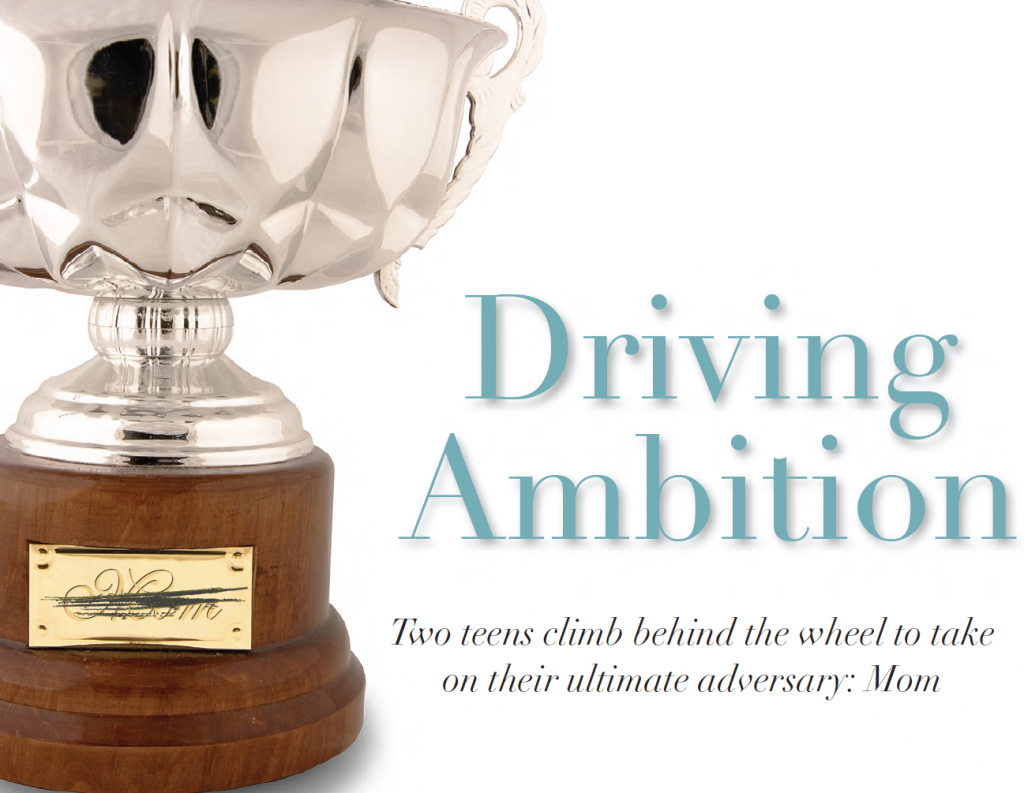
Mike and Suzanne are what some would call the classic suburban power couple. They are generous, good-natured and successful. Both are fit, focused and—when it comes to sports— fearsome competitors. Naturally, their teenage sons have followed in their parental footsteps. Michael (15) is a member of a state championship swim team. George (17) is nationally ranked at two miles and a member of the winning 4 x 800 prep relay team at the Millrose Games in Madison Square Garden. Along with their growing collection of ribbons and trophies, the boys have also acquired the less than- charming adolescent swagger that comes with the realization that they can now best Mom and Dad in almost any sport they choose. One notable exception? Operating an automobile. Neither yet has the means (nor the license) to prove what, to them, is a foregone conclusion: that they are “better drivers” than their mother. This is the same woman, lest they forget, who has chauffeured them flawlessly to and from more practices and meets than they can, or she cares to, remember. Water under the bridge, Mom. It’s all about what you can do, not what you’ve done. And so it was with considerable enthusiasm that Suzanne accepted the opportunity to put her two backseat drivers in the front seat for a Family Race one Thursday evening in March at Pole  Position Raceway, the indoor karting venue located near the Liberty Science Center in Jersey City. She admits she was itching to teach Michael and George a lesson as all three pulled on their helmets and strapped themselves into their karts (which—because of Michael’s age—were limited to a still-speedy 30 mph). Suzanne also admits to underestimating the fact that her sons work together like Velociraptors. With their three vehicles lined up one behind the other to start, the boys insisted she have the honor of taking the lead kart. In almost any race, both teens knew, you want your adversary ahead of you so you can choose the time and place of their ultimate defeat. In other words, she was dead meat before they started their engines. The flag dropped and the three roared into the first turn. Moments later, Suzanne found herself in third place. A nudge from George and then a stronger bump from Michael sent her into the black-and-yellow padded barrier. By the time she got back up to speed, she was playing catch-up. She never did close the gap on her sons, who showed her no mercy and gave her no daylight. They were too busy fighting for fraternal supremacy. George edged Michael at the finish line, with Suzanne a few heartbeats behind. “I should have realized they would never let me win,” she says bemusedly. “Even though I’m their mother, they will still win at any cost. The mistake I made was that I never should have started in front of them.” In the days that followed, as Suzanne returned to chauffer duties, mother and sons had something new to discuss: the fact that they were now officially, indisputably and undeniably “better drivers” than she—against a wealth of evidence still to the contrary. Suzanne reminded Michael and George that she had nearly caught up to them after they sent her into the wall. They corrected their mother, informing her that she had actually fallen a full lap behind! Shifting gears quickly, Suzanne pointed out that handling a kart at 30 mph takes considerably less skill and experience than zig-zagging through Turnpike traffic at 75 (although for the record she has never done that). Blank stares. Exasperated, Suzanne said that intentionally running your materfamilias off the road doesn’t make you a “better driver”—it makes you a dangerous one. Michael and George refused to dignify their mother’s accusations of collusion and dirty driving. Both maintain that Suzanne was the unfortunate victim of an unlucky accident. Looking back, Suzanne says the only humiliation she actually
Position Raceway, the indoor karting venue located near the Liberty Science Center in Jersey City. She admits she was itching to teach Michael and George a lesson as all three pulled on their helmets and strapped themselves into their karts (which—because of Michael’s age—were limited to a still-speedy 30 mph). Suzanne also admits to underestimating the fact that her sons work together like Velociraptors. With their three vehicles lined up one behind the other to start, the boys insisted she have the honor of taking the lead kart. In almost any race, both teens knew, you want your adversary ahead of you so you can choose the time and place of their ultimate defeat. In other words, she was dead meat before they started their engines. The flag dropped and the three roared into the first turn. Moments later, Suzanne found herself in third place. A nudge from George and then a stronger bump from Michael sent her into the black-and-yellow padded barrier. By the time she got back up to speed, she was playing catch-up. She never did close the gap on her sons, who showed her no mercy and gave her no daylight. They were too busy fighting for fraternal supremacy. George edged Michael at the finish line, with Suzanne a few heartbeats behind. “I should have realized they would never let me win,” she says bemusedly. “Even though I’m their mother, they will still win at any cost. The mistake I made was that I never should have started in front of them.” In the days that followed, as Suzanne returned to chauffer duties, mother and sons had something new to discuss: the fact that they were now officially, indisputably and undeniably “better drivers” than she—against a wealth of evidence still to the contrary. Suzanne reminded Michael and George that she had nearly caught up to them after they sent her into the wall. They corrected their mother, informing her that she had actually fallen a full lap behind! Shifting gears quickly, Suzanne pointed out that handling a kart at 30 mph takes considerably less skill and experience than zig-zagging through Turnpike traffic at 75 (although for the record she has never done that). Blank stares. Exasperated, Suzanne said that intentionally running your materfamilias off the road doesn’t make you a “better driver”—it makes you a dangerous one. Michael and George refused to dignify their mother’s accusations of collusion and dirty driving. Both maintain that Suzanne was the unfortunate victim of an unlucky accident. Looking back, Suzanne says the only humiliation she actually  suffered that evening was being photographed on the victory stand with her boys (now both six-footers) towering over her. Otherwise, it was a tremendous experience. “It was very entertaining,” she says. “We thoroughly enjoyed ourselves. It’s a great place. We hung out for an hour after the race. The people there couldn’t be nicer.” Okay, down to brass tacks. In a return engagement, does Suzanne think she would avenge her defeat? “I do,” she says with a competitive smirk. And just how? “No way I’m divulging my strategy! Let’s just say that Mom’s still got a few tricks up her sleeve.” EDGE
suffered that evening was being photographed on the victory stand with her boys (now both six-footers) towering over her. Otherwise, it was a tremendous experience. “It was very entertaining,” she says. “We thoroughly enjoyed ourselves. It’s a great place. We hung out for an hour after the race. The people there couldn’t be nicer.” Okay, down to brass tacks. In a return engagement, does Suzanne think she would avenge her defeat? “I do,” she says with a competitive smirk. And just how? “No way I’m divulging my strategy! Let’s just say that Mom’s still got a few tricks up her sleeve.” EDGE
Editor’s Note: Pole Position (polepositionraceway.com) is located off Exit 14B of the New Jersey Turnpike and is open seven days a week. Family Races are run Monday thru Thursday. Direct:
The fast-food Drive-Thru has transformed our lives. Well, that’s one way of looking at it.
Fast food giant Taco Bell recently became embroiled in a high-profile lawsuit, during which it was compelled to respond to allegations that its “beef filling”
contained— what’s the delicate way of putting this? —twice as much “filling” as “beef.” The media seized on this story, as did the late-night comics. Unfortunately, everyone missed the point: The crime is what’s in fast food, not what isn’t. “Fast food poses a huge threat to the American public’s health, along with smoking and substance abuse,” says Ari Eckman, MD, chief of the Division of Endocrinology, Diabetes & Metabolism and director of The Diabetes Management Center at Trinitas Regional Medical Center. “Fast food meals are high in fat, sugar, salt, starch and calories, and very low in fiber and nutrients.” Indeed, the convenience of grab-and-go meals is far outweighed by the dangers that await us after we make that final hard left to the pickup window. Study after study is showing that reliance on heavily processed foods could be costing us our health. In a 2005 report published in The Lancet, healthy young adults who consumed fast food more than twice each week gained 10 more pounds and had twice as great an increase in insulin resistance—a precursor to type-2 diabetes—as their healthier eating counterparts. Fast foods are rich in trans fats, those manmade fats that have been shown to wreak havoc on the human heart. “Trans fats are terrible for one’s cholesterol,” Dr. Eckman says. “It’s dangerous to eat these foods if you have high blood pressure
e or high cholesterol.” Fast food isn’t just a nutritional nightmare. With the constant push to supersize, fast food portions are warping our sense of when to say when. “People are not at all in touch with the reality of how much they’re eating,” Dr. Eckman says. “The portion sizes are encouraging people to eat more. Burgers 50 years ago were only one ounce, and now they’re six ounces. You buy a 64-ounce soda, which is a half-gallon— and contains 48 teaspoons of sugar.” As a result, Dr. Eckman maintains, our society is becoming supersized. “Over 60 percent of our population is overweight, and 30 percent is obese,” he says. “And the children’s statistics are even more mind-boggling—nine million American kids were considered obese, a rate that has nearly doubled in the last 20 years. It’s getting out of control at an epidemic rate.” Fortunately, there are measures you can take to fight back—even if you have to eat fast:
overweight, and 30 percent is obese,” he says. “And the children’s statistics are even more mind-boggling—nine million American kids were considered obese, a rate that has nearly doubled in the last 20 years. It’s getting out of control at an epidemic rate.” Fortunately, there are measures you can take to fight back—even if you have to eat fast:
- Check the labels. Most fast-food restaurants offer nutritional information on their websites or on pamphlets, which enables you to make a more informed decision about what you order. “Try to stay away from the foods that are highest in cholesterol, saturated fats, sugar and salt,” Dr. Eckman says. “Choose low-fat options, if they’re available.” Keep in mind that that healthy salad may come with a not so – healthy dressing, so resist the temptation to squeeze the entire packet onto your greens.
- Cut down on your portions. Avoid the push to supersize your meal—those value menus may be a better deal
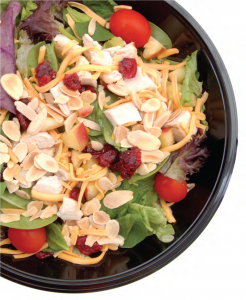 financially, but could cost you your health. “To help spread out the calories, consider eating half of it and giving the other half to your partner or taking it home for another meal,” Dr. Eckman advises.
financially, but could cost you your health. “To help spread out the calories, consider eating half of it and giving the other half to your partner or taking it home for another meal,” Dr. Eckman advises. - Turn your kids into educated eaters. The fast-food commercials—and those little plastic toys—may entice your kids into clamoring for a drive-thru run, but you can fight back. “Making a healthy dinner at home can be a fun activity you do with your kids, that can help encourage them to eat healthier,” Dr. Eckman suggests. “You can also talk with your kids about the problem of obesity and some of its long-term effects on health, so they can become educated and make healthier choices on their own.”
- Moderation. Dr. Eckman suggests limiting fast food to only one meal per week, at the most. “Enjoy it once in a while, but this really shouldn’t be a weekly or biweekly event,” he says. “You don’t want to sacrifice your health for convenience.” EDGE
Editor’s Note: Lisa Milbrand is a New Jersey-based writer whose articles on health and relationships appear in Parents, Arthritis Today and Modern Bride. Her blog themamahood.com celebrates the life of a working mother.

At the Union County Kennel Club Show, there’s competition at both ends of the leash.
The problem with a bright idea is that sometimes it becomes a do-it-yourself project. During a fit of `insomnia last January I found myself watching a silly late-night cable show called Animal Champions. It got me thinking about what makes an “official” champion in the animal world. A few days later I assigned a writer to attend the 101st Union County Kennel Club Show—held near the southern tip of New Jersey, at the Wildwood Convention Center—and try to capture the spirit  of competition in a fun and lively story. Alas, the original writer, having been stuck in one too many snowdrifts during the winter that wouldn’t quit, bowed out after hearing rumors that the top two-thirds of the Garden State Parkway might be a sheet of ice on the morning in question. With one child in college and another getting close, a gruesome highway death didn’t seem to have the same downside for me, so I agreed to go in her place. In the spirit of full disclosure, I should point out here that I am not a dog person. And they seem to know it. Even “my own” dog—the one my wife and daughters outvoted me on 3-to- 1—is careful not to irritate me. I’ll spare you my troubled history with canine-Americans. Not that it isn’t interesting. It’s just that I can’t stand it when other people yammer on about their childhood this and childhood that. Upon arriving at the convention center, I was greeted with open arms by show officials, who cheerfully tolerated me as I got my facts straight and asked a lot of stupid questions over a quick lunch. Then it was out onto the floor. My goal? Quietly observe, form an opinion, and then dig-dig-dig until I understood what it means to compete at a real dog show. What surprised me after watching several breeds go through judging was that the dogs were not eyeing one another or trying to intimidate each other, at least not that I could tell. They were completely absorbed by their work. And make no mistake, they treated it like work. It’s a job they love, of course—a champion show dog has to enjoy the experience. However, there was no interplay between the animals even when they were standing inches apart in the ring. It was a little weird, but I got it. These were the “pros” of canine competition. Whatever makes my dog run in crazed circles around vehicles exiting—but not entering— our driveway had been bred out of these animals. Still, this was a competition, with money and prestige at stake. Someone in the building was driven to win. I just had to find out whom. I decided to cruise the aisles between the different handlers. Each had a space staked out, with dogs in crates, dogs on grooming stands, and dogs on their way to and from the judging rings. An unattended Cocker Spaniel eyed me with suspicion and I returned its glance with a raised eyebrow. I hadn’t lost my touch. The animal leaped off the table and ran down the aisle in front of me, causing a brief panic. I felt bad, like I’d broken something in an antique shop. Since the dogs clearly were not going to help me, I turned my attention to the people preparing them for competition. I’m better with people anyway. Among the many top handlers and trainers present at this event was one who towered over the rest, at least figuratively. His name is Kaz Hosaka, and he is to the poodle world what Michael Jordan is to basketball. Smooth, clever, elegant and nearly unbeatable. (And he’s been on Charlie Rose, so take that other poodle handlers!) Based out of Greenwood, Delaware, Hosaka attends as many as 150 shows a year and has been honing poodles like samurai swords for three decades. You do the math. The important number is #1, and he has racked up a bunch of ’em during his career, including the #1 toy poodle in 2010. Hosaka is a “finisher” of dogs. In other words, if you think you’ve lucked into a great poodle, Kaz is the man who knows how to transform it into a champion. He won’t take a dog unless he truly believes it can be a winner. Often he must break the bad news: This is a wonderful pet, but not a show dog. That being said, Hosaka will consider animals that other handlers have turned down because they may be too difficult. “I am the last stop,” he smiles. “If I can’t do it, nobody can.” Like many in his profession, Hosaka (left) is a handler of owners, too. Most ship their dogs off like boarding-school kids, dropping in occasionally to monitor their progress at important shows. The bulk of handler-owner contact is accomplished over the phone. When one does appear at an event, Hosaka’s rule number-one is don’t come near his set-up and throw your poodle off its game. Helicopter parenting may be tolerated in the human world, but during shows it is definitely frowned upon. One owner who left her dog alone was Charlize Sutton, and the strategy paid off. Her confident little Norwich Terrier went out and blew the fleas off the competition, grabbing Best in Breed. Charlize had more pressing matters to attend to, barely acknowledging the victory. She had her nose buried in an iPad, watching Dora the Explorer. Charlize is two—by far the youngest owner I could locate, though probably not, a neighboring groomer whispered to me, the least mature. Charlize (right) was stationed in a portable playpen in the midst of a dizzying ballet involving three humans, 17 dogs and a seemingly endless array of clippers, snippers, brushes and blowers, each of which was wielded with maximum expertise and minimum effort. Her parents, Jessy and Roxanne, along with assistant Tom Durst, have a first-class operation back in Narvon, Pennsylvania, and they get paid well for the work they do. The Suttons were on a winning streak when I barged into their little corner of doggie heaven. Miles, a regal, self-possessed Rhodesian Ridgeback, was returning from the judging ring with, yawn, another Best in Breed nod. Miles looked like he could stare down a lion (which, apparently, he was bred for), and so did Jessy. He handles the working breeds at shows, while Roxanne works her magic with terriers. “We are sticklers for conditioning,” Jessy responded when I asked what gave his dogs an edge. “When an owner hires us, it may not seem cost-effective right away, but the constant work we do pays off in the long run, because we finish dogs quickly.” Is the flip side of this equation, I wondered, that owners apply a huge amount of pressure? The Suttons confirmed this after getting off the phone with Miles’s owner, reporting the Rhodie’s win within seconds of the judge’s decision. “The owners who hire us believe they should win every time,” says Jessy, adding quickly that “it’s okay, because that’s the attitude we have. We want to win every time, too. Of course, not even the number-one dog in the country wins breed in every show—if they did no one would show. It would be boring.” After talking to a half-dozen handlers I began to wonder how often owners actually show their own dogs. The people I asked offered wildly varying percentages, but I could tell the number isn’t high. Basically, owners who can afford show dogs tend to work for a living and therefore rarely have the time to show them. Those that do are more likely to participate in a weekend show as opposed to mid-week ones like this one.
of competition in a fun and lively story. Alas, the original writer, having been stuck in one too many snowdrifts during the winter that wouldn’t quit, bowed out after hearing rumors that the top two-thirds of the Garden State Parkway might be a sheet of ice on the morning in question. With one child in college and another getting close, a gruesome highway death didn’t seem to have the same downside for me, so I agreed to go in her place. In the spirit of full disclosure, I should point out here that I am not a dog person. And they seem to know it. Even “my own” dog—the one my wife and daughters outvoted me on 3-to- 1—is careful not to irritate me. I’ll spare you my troubled history with canine-Americans. Not that it isn’t interesting. It’s just that I can’t stand it when other people yammer on about their childhood this and childhood that. Upon arriving at the convention center, I was greeted with open arms by show officials, who cheerfully tolerated me as I got my facts straight and asked a lot of stupid questions over a quick lunch. Then it was out onto the floor. My goal? Quietly observe, form an opinion, and then dig-dig-dig until I understood what it means to compete at a real dog show. What surprised me after watching several breeds go through judging was that the dogs were not eyeing one another or trying to intimidate each other, at least not that I could tell. They were completely absorbed by their work. And make no mistake, they treated it like work. It’s a job they love, of course—a champion show dog has to enjoy the experience. However, there was no interplay between the animals even when they were standing inches apart in the ring. It was a little weird, but I got it. These were the “pros” of canine competition. Whatever makes my dog run in crazed circles around vehicles exiting—but not entering— our driveway had been bred out of these animals. Still, this was a competition, with money and prestige at stake. Someone in the building was driven to win. I just had to find out whom. I decided to cruise the aisles between the different handlers. Each had a space staked out, with dogs in crates, dogs on grooming stands, and dogs on their way to and from the judging rings. An unattended Cocker Spaniel eyed me with suspicion and I returned its glance with a raised eyebrow. I hadn’t lost my touch. The animal leaped off the table and ran down the aisle in front of me, causing a brief panic. I felt bad, like I’d broken something in an antique shop. Since the dogs clearly were not going to help me, I turned my attention to the people preparing them for competition. I’m better with people anyway. Among the many top handlers and trainers present at this event was one who towered over the rest, at least figuratively. His name is Kaz Hosaka, and he is to the poodle world what Michael Jordan is to basketball. Smooth, clever, elegant and nearly unbeatable. (And he’s been on Charlie Rose, so take that other poodle handlers!) Based out of Greenwood, Delaware, Hosaka attends as many as 150 shows a year and has been honing poodles like samurai swords for three decades. You do the math. The important number is #1, and he has racked up a bunch of ’em during his career, including the #1 toy poodle in 2010. Hosaka is a “finisher” of dogs. In other words, if you think you’ve lucked into a great poodle, Kaz is the man who knows how to transform it into a champion. He won’t take a dog unless he truly believes it can be a winner. Often he must break the bad news: This is a wonderful pet, but not a show dog. That being said, Hosaka will consider animals that other handlers have turned down because they may be too difficult. “I am the last stop,” he smiles. “If I can’t do it, nobody can.” Like many in his profession, Hosaka (left) is a handler of owners, too. Most ship their dogs off like boarding-school kids, dropping in occasionally to monitor their progress at important shows. The bulk of handler-owner contact is accomplished over the phone. When one does appear at an event, Hosaka’s rule number-one is don’t come near his set-up and throw your poodle off its game. Helicopter parenting may be tolerated in the human world, but during shows it is definitely frowned upon. One owner who left her dog alone was Charlize Sutton, and the strategy paid off. Her confident little Norwich Terrier went out and blew the fleas off the competition, grabbing Best in Breed. Charlize had more pressing matters to attend to, barely acknowledging the victory. She had her nose buried in an iPad, watching Dora the Explorer. Charlize is two—by far the youngest owner I could locate, though probably not, a neighboring groomer whispered to me, the least mature. Charlize (right) was stationed in a portable playpen in the midst of a dizzying ballet involving three humans, 17 dogs and a seemingly endless array of clippers, snippers, brushes and blowers, each of which was wielded with maximum expertise and minimum effort. Her parents, Jessy and Roxanne, along with assistant Tom Durst, have a first-class operation back in Narvon, Pennsylvania, and they get paid well for the work they do. The Suttons were on a winning streak when I barged into their little corner of doggie heaven. Miles, a regal, self-possessed Rhodesian Ridgeback, was returning from the judging ring with, yawn, another Best in Breed nod. Miles looked like he could stare down a lion (which, apparently, he was bred for), and so did Jessy. He handles the working breeds at shows, while Roxanne works her magic with terriers. “We are sticklers for conditioning,” Jessy responded when I asked what gave his dogs an edge. “When an owner hires us, it may not seem cost-effective right away, but the constant work we do pays off in the long run, because we finish dogs quickly.” Is the flip side of this equation, I wondered, that owners apply a huge amount of pressure? The Suttons confirmed this after getting off the phone with Miles’s owner, reporting the Rhodie’s win within seconds of the judge’s decision. “The owners who hire us believe they should win every time,” says Jessy, adding quickly that “it’s okay, because that’s the attitude we have. We want to win every time, too. Of course, not even the number-one dog in the country wins breed in every show—if they did no one would show. It would be boring.” After talking to a half-dozen handlers I began to wonder how often owners actually show their own dogs. The people I asked offered wildly varying percentages, but I could tell the number isn’t high. Basically, owners who can afford show dogs tend to work for a living and therefore rarely have the time to show them. Those that do are more likely to participate in a weekend show as opposed to mid-week ones like this one.
It is accepted wisdom, however, that owners don’t “shine” the way top handlers do, meaning they are not as adept at pushing a dog’s best attributes to influence judges. What is the price tag for a top handler? Hang on to your teeth. To take a dog from obscurity to the Westminster Kennel Club Show can easily cost $250,000. One breeder described the animals that reach Westminster as “Yale pHd’s.” My first thought was that a quarter-million is a bargain for any kind of advanced degree from Yale, even for a dog. (And believe me, I know a few.) Then I wondered how much of that goes to the handler? The answer is a lot, but also not as much as you’d think. A huge chunk covers the endless travel and other costs that mount up at this level of the game. That being said, dog handlers with a winning track record do generate handsome six-figure incomes, especially when they work with several championship dogs at once. This was something of a revelation to me. I was frankly astounded. Although, when you sit down with a pad and paper (as I did) and actually work out the huge amounts of time and travel involved, it makes a lot of sense. They may make a nice living, but they definitely earn it. Suddenly it dawned on me where the true competition was at these shows. For my first four hours I had been looking at the wrong end of the leash. Follow the money, right? Every win is a notch in a handler‘s belt, and every notch has a dollar value attached to it. More wins demand higher finishing and showing fees, and at the big shows there is serious bonus money, too. Come away from a few shows empty-handed and the phone might stop ringing. Simply put, the real competitors at these shows are not the dogs. They are the handlers. The competition is 24 hours a day, seven days a week. It’s deadly serious, yet only in the rarest circumstances could it be considered cutthroat. You get that after you’ve talked to a few handlers. They are focused and tense and totally on their games. But they honestly adore what they do and adhere to a strict code of conduct and ethics. Apparently, there are enough owners, enough shows and enough money to keep everyone happy. Including my friends, the dogs. EDGE

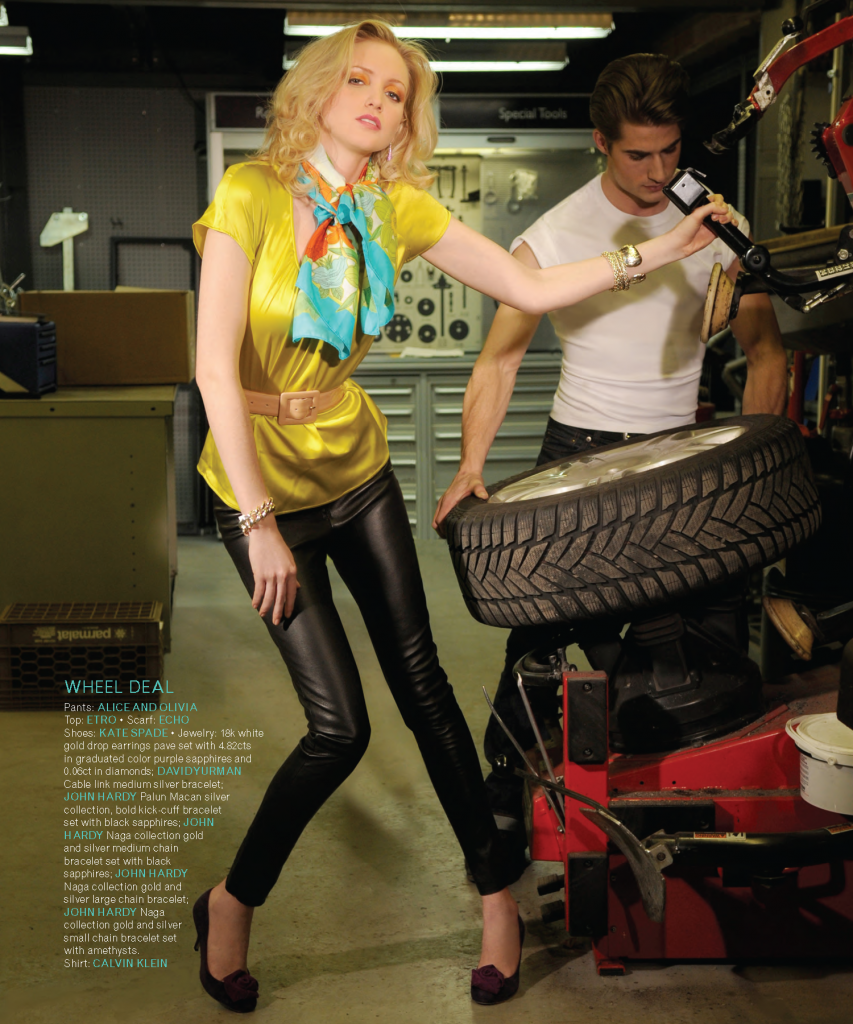

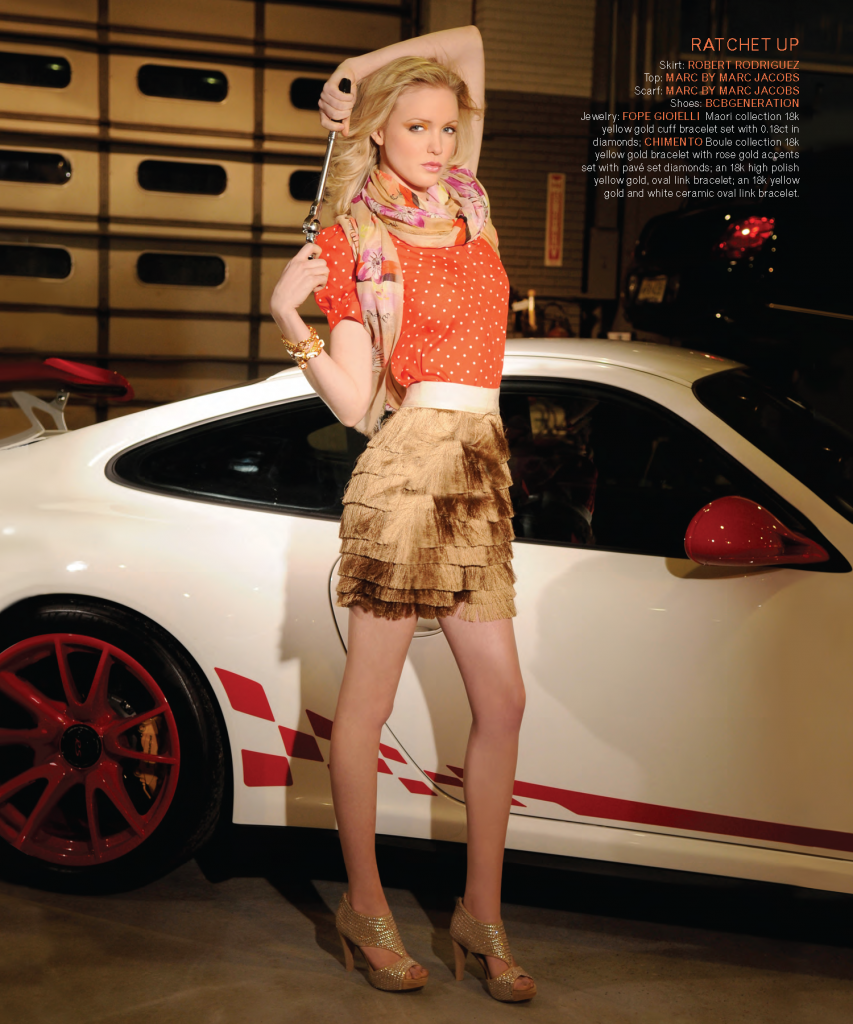
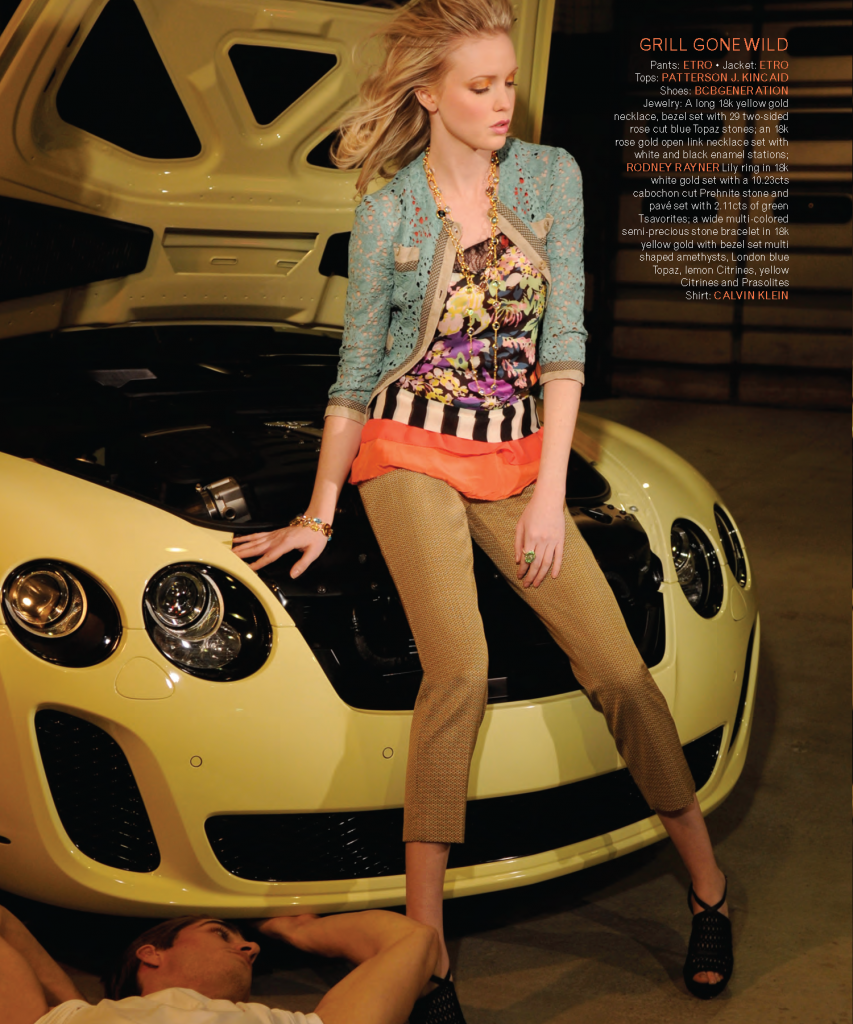
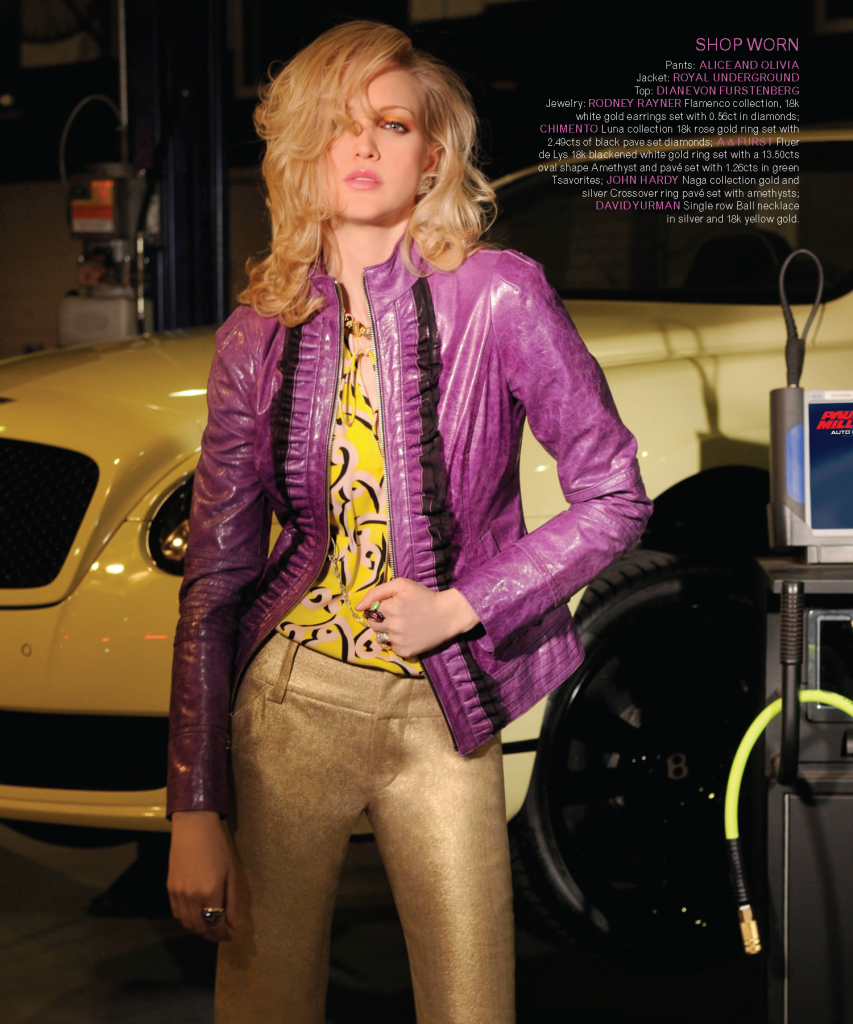

You’ve probably heard that NASCAR has become a really big deal. You may even know a couple of closet racing fanatics 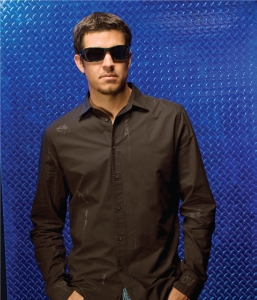 yourself. But let’s be honest— New Jersey is hardly a breeding ground for stock-car racing talent. Well, just don’t tell that to the folks in Ocean County. Every weekend they root for one of their own, MARTIN TRUEX JR., to take the checkered flag against the likes of living legends Jimmie Johnson, Jeff Gordon and another “junior”—Dale Earnhardt. How does a world-class racer go from the dirt tracks of South Jersey to the legendary ovals and super speedways of NASCAR? Turns out, it’s all in the family.
yourself. But let’s be honest— New Jersey is hardly a breeding ground for stock-car racing talent. Well, just don’t tell that to the folks in Ocean County. Every weekend they root for one of their own, MARTIN TRUEX JR., to take the checkered flag against the likes of living legends Jimmie Johnson, Jeff Gordon and another “junior”—Dale Earnhardt. How does a world-class racer go from the dirt tracks of South Jersey to the legendary ovals and super speedways of NASCAR? Turns out, it’s all in the family.
EDGE: Your father was a short-track racing legend in the northeast, and also the local “Clam King”—the owner of a large seafood business here in New Jersey. What do you learn from a family culture like that?
MT: Well, it’s a little bit different from what most people grow up around. My dad was a businessman who raced as a hobby, but he was very serious about it. He had aspirations of moving up and running in the big time—which he did, but he never had the equipment to drive for a living. Obviously he put a lot into it. His passion for racing is one of the things that made him successful in business, because he knew he had to make money to go racing.
EDGE: So you understood the connection between passion and work ethic?
MT: Yes, I did. My dad worked really hard so he could go racing. That’s what I learned from him, that you have to work hard for something. And that to be a racer you really have to want to do it, because there are thousands of people who want to do it, too. You won’t get that chance without working hard and taking it seriously.
EDGE: When you and Martin Sr. talked about racing, did you focus much on the danger of the sport?
MT: No. As a racer you worry about how you can go faster, how you can do better than the guy in front of you. I don’t think anyone who has raced for a long time worries about the danger of it. You’re passionate about winning, and all that other stuff is just secondary.
EDGE: How was the competition in South Jersey when you were growing up?

MT: When I was racing in Jersey it was never what I’d call a “hotbed.” There were only a few places we could go. But there was good competition. So I was able to learn the ropes and refine my techniques at a young age. That had a lot to do with why I became successful.
EDGE: Did you feel at home behind the wheel when you first began competing as a teenager?
MT: Racing was something I was interested in long before I got to do it. The will to get into racing was there for a long time. I was able to learn a lot from my dad—I didn’t just go and watch him race. I really paid attention to what was going on. I hung out in the shop, worked on the cars and tried to learn as much as I could. When I first got into a race car it was second nature. I felt I’d been doing it all my life. It felt natural to me.
EDGE: Your younger brother, Ryan, has gotten off to a fast start in his career. Do you think you two had a similar feel for racing?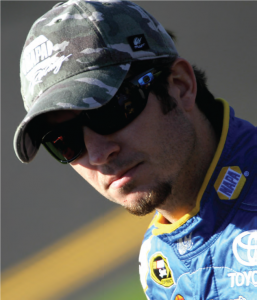
MT: Yeah, I think we did. One day he came to my father and me and said, “I want to race.” We’d never really appreciated his interest in it, but once Ryan started, we could tell that he really knew what he was doing. He had been paying attention, he had been learning—almost with no one even noticing it. Right off the bat he was fast, and right off the bat he’s been winning. When Ryan got into a car, he clearly understood racing. He’s going to be running some Nationwide races this year and he’s only 18! That tells you how quickly he’s learned and how well he’s been able to adapt to different cars in different situations.
EDGE: You won back-to-back Busch championships in 2004 and 2005. Obviously, at that point you knew you could be successful at the top levels of auto racing. Looking back, what was your Eureka Moment—the time when you first thought to yourself, “Oh, man. I can do this!”
MT: As soon as I got in [Dale Earnhardt Jr.’s] Chance 2 car in 2003, I knew right away. The first time we ran, no one was expecting much and I had a shot at winning that race. I knew at that moment that this was my opportunity, and that I had to take advantage of it. I knew we could do it. With the crew we had and the equipment we had, I knew it was possible to win. From that moment on I was able to focus on what I needed to do as a driver and as a member of a team. And I had a great team. So we went into 2004 with a ton of confidence. We knew we could win races…and we ended up winning the championship.
EDGE: At the Daytona 500 in 2010, you were right there at the end, leading the race.
MT: Yeah. We had as good a shot as anyone. We were leading right up until the end. It’s hard to be the leader at the end of the restrictor plate races because you’re kind of a sitting duck.
EDGE: That’s an example of how razor-thin the difference is between winning a race and coming in, say sixth, which you did—just a couple of seconds behind the winner.
MT: It all comes down to circumstances. It takes not only your decisions but the decisions of the other drivers to determine the outcome. If two or three other guys had made different moves, and then I had made a different move, the outcome would have been completely different.
EDGE: Do you look back and say I should have done such-and-such differently?
MT: It’s really hard to second-guess, hard to look back. Obviously I wanted to win the race—that’s what I was there for—but there were 10 or 15 guys who could have won that race! So it’s a little bit of a crapshoot. That’s just the way it goes. You don’t think too much about the past, you just learn from it—and hope you do better the next time and win.
EDGE: One of the great challenges in any sport is filling the shoes of a legend. In 2010, you were hired to replace one of the all-time greats, Michael Waltrip, a two-time winner of the Daytona 500. And you were hired by Michael Waltrip— talk about pressure!
MT: No, working with Michael has just been a blast. When he got out of the car, he wasn’t looking for a guy who was “as good as me”—he was looking for someone he thought was better, because he wants his car to run up front. To have him pick me, that was a cool feeling. To be honest, it reminded me of when I was 18 and my dad was still racing in the Busch North series. We were planning on running a few races together and seeing what happened. We ran one race and he retired. He said, “I realize you’ve got a great opportunity to do what I always wanted to do. I’m going to quit right here and put all I can behind you to get you ready to go.”
EDGE: It’s the NASCAR version of the Circle of Life.
MT: I guess. But I can’t imagine stepping out of the car and handing over the keys, per se, to someone I thought would do a better job. It just blows my mind. I love racing so much, I can’t imagine being in a position where I’d do that. And for my brother Michael, racing’s all he’s known and done. He is so passionate about it. So that really showed his true character—and made me very proud. It makes me want to do a good job for him.
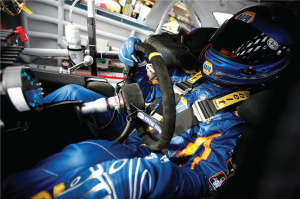 EDGE: The main sponsor of your car is NAPA. Do you have much interaction with them?
EDGE: The main sponsor of your car is NAPA. Do you have much interaction with them?
MT: NAPA Auto Parts has been a huge part of this sport for a long time, so it’s an honor to drive the race car for them and be the face of NAPA. Being a part of the company, of the storeowners and employees, that part’s actually been a lot of fun.
EDGE: Does winning a race ever get old? Do you still get the same thrill you did when you were a teenager?
MT: To be honest, these days, at this level, wins are so much more difficult to come by that it’s better. The harder they are to get the sweeter they are!
EDGE: When you return to New Jersey for the holidays to visit friends and family, is there any one place that is special to you?
MT: The Jersey Mike’s in Manahawkin. My friends and I spent a lot of time in there. You know how on TV you have those restaurants the high school kids use as their hangout place? That was ours. That place will always be special.
EDGE: A lot of people who grow up in Jersey don’t truly appreciate it until they’ve left. What is it about the Garden State that you remember most fondly?
MT: The thing I appreciate, having grown up at the Jersey Shore, is the natural diversity of the state. Where I lived in Ocean County I could go five minutes and be out on the bay fishing, or go five minutes in the other direction and be out in the woods hunting. But with my family being in the seafood business and me loving to fish, the salt water is what I miss the most. Jersey sometimes has a bad reputation, but if you ask me, it’s a pretty great place to live.

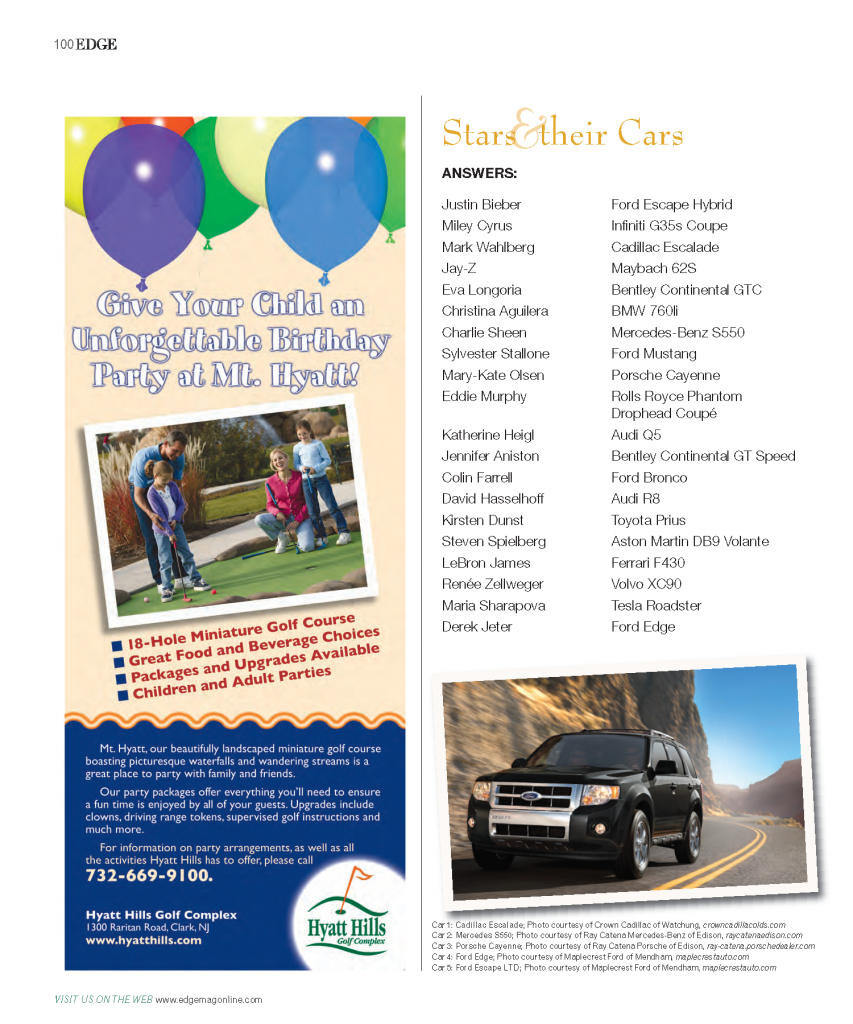
Knowing how to get into the ‘best possible college’ starts with understanding what that actually means.
We have all consumed the Kool-Aid. We all crave and covet the translucent rear-windshield sticker announcing to the community what a great job we did getting our child into a name-brand college. In doing so, however, we are committing a heresy of emphasis; we have become so obsessed with the outcome that we have overlooked the whole point of the process. As a Certified Educational Planner with many years in the trenches of the “admissions game” (as one colleague playfully refers to it), I have accumulated an abundance of two things: anecdotes and raw data. The data speaks for itself; in the end, numbers are numbers. But the anecdotes—the “data” lived out through the hearts, hands, and hormones of respiring teenaged beings—is why I cannot imagine doing anything else with my life. It is this passion that is incendiary with my students; it is the invisible permission slip for each of them to permit themselves to dream of a life and future that is so meaningful, so gratifying, so spectacularly promising, that they cannot help but begin to vision what it might be. Which is why nothing makes me cringe like hearing a parent say, “WE want to apply to…” My philosophy is this: Focus on the student’s process of growth and self-discovery in the college application process, and the ideal college match will be the beautiful consequence. Your child’s “reach” school may not even be on your radar when you begin. Thus your first and most important effort should be to identify the best possible destination—not just for those four wonderful years, but for the rest of his or her life. I may be uttering heresy to those Type A’s among us (myself included) who cleave to the Machiavellian means-to-an-end mentality of Why do anything if it doesn’t get you to the next level in life? But the experts back me up. Steve Antonoff, of Antonoff and Associates in Denver, Colorado, says this about people in my profession: “The treasure the consultant has is not the list, the treasure lies in figuring out who a young person is and helping them discover what colleges will be the best fit for them.” What Antonoff is gesturing at is that a great consultant—or a great guidance counselor, or a wise mentor—will do whatever it takes to: 1) cut through the teen peer-pressure culture that oppressively enforces conformity, 2) focus on students for who they are, and 3) mirror back to them the unique gifts with which they have been blessed. In my own practice, I encourage each young person not to put his or her light under a basket, but to hold it aloft so as to illuminate the room, the school, the community and, I daresay, the globe. Only then does a true picture begin to emerge of the “best possible college.” Only then can a young person start building an application strategy to get into that school. In that spirit, consider the experiences and outcomes of the following four students…
our child into a name-brand college. In doing so, however, we are committing a heresy of emphasis; we have become so obsessed with the outcome that we have overlooked the whole point of the process. As a Certified Educational Planner with many years in the trenches of the “admissions game” (as one colleague playfully refers to it), I have accumulated an abundance of two things: anecdotes and raw data. The data speaks for itself; in the end, numbers are numbers. But the anecdotes—the “data” lived out through the hearts, hands, and hormones of respiring teenaged beings—is why I cannot imagine doing anything else with my life. It is this passion that is incendiary with my students; it is the invisible permission slip for each of them to permit themselves to dream of a life and future that is so meaningful, so gratifying, so spectacularly promising, that they cannot help but begin to vision what it might be. Which is why nothing makes me cringe like hearing a parent say, “WE want to apply to…” My philosophy is this: Focus on the student’s process of growth and self-discovery in the college application process, and the ideal college match will be the beautiful consequence. Your child’s “reach” school may not even be on your radar when you begin. Thus your first and most important effort should be to identify the best possible destination—not just for those four wonderful years, but for the rest of his or her life. I may be uttering heresy to those Type A’s among us (myself included) who cleave to the Machiavellian means-to-an-end mentality of Why do anything if it doesn’t get you to the next level in life? But the experts back me up. Steve Antonoff, of Antonoff and Associates in Denver, Colorado, says this about people in my profession: “The treasure the consultant has is not the list, the treasure lies in figuring out who a young person is and helping them discover what colleges will be the best fit for them.” What Antonoff is gesturing at is that a great consultant—or a great guidance counselor, or a wise mentor—will do whatever it takes to: 1) cut through the teen peer-pressure culture that oppressively enforces conformity, 2) focus on students for who they are, and 3) mirror back to them the unique gifts with which they have been blessed. In my own practice, I encourage each young person not to put his or her light under a basket, but to hold it aloft so as to illuminate the room, the school, the community and, I daresay, the globe. Only then does a true picture begin to emerge of the “best possible college.” Only then can a young person start building an application strategy to get into that school. In that spirit, consider the experiences and outcomes of the following four students…
JANET: Almost Famous Janet attended a “magnet” public high school. She excelled academically and acquired along the way a specialization, due to the unique coursework and curriculum of her specialized high school. With a friend (and following the promptings not of her single parent, but of her passion), she began a music and entertainment web site. This enabled her to obtain press passes, which she and her friend used to gain backstage access at various performances and concerts. What would have been fun and games for her peers was work for Janet. She spent countless hours preparing questions for interviews and then sitting with musicians pre-performance. But Janet’s love of this subject made this work feel like play. She would then blog about her interviews on the website, which developed a devoted readership (à la Almost Famous). When Janet came to me to select colleges, her mother was concerned about pursuing too narrow of a focus in music industry management. Herein lay the folly. While I understood her mother’s apprehension, Janet was perfectly poised, based on her industry exposure and connections to be an ideal candidate to such coveted programs as the Clive Davis Department at the NYU Tisch School of the Arts and Drexel University’s Music Industry program. These are specialized and, as such, require specialized students who “make sense” to the admissions reader. Not only was Janet accepted to every college to which she applied, she received copious amounts of merit aid to incentivize her to come hither.
JULIA: Model Applicant Julia, a print-model blonde go-getter with a husky voice, possessed perhaps the healthiest self-esteem I have ever encountered in a young adult from a public high school. My preconceived notion of the modeling industry’s impact on a teen was that the vulnerability, competition and rejection based on the mercurial whims of anonymous PR marketers would crush a young person’s confidence and spirit. However, Julia not only developed real empathy for the outcast and socially ostracized, but a “centeredness” wherein her confidence emanated from an aquifer within. The resilience she learned from the endless industry “go-sees” amplified her determination and attenuated her fear of failure—a debilitating attribute of today’s Millennials. She got passionately involved with a buddying program that pairs special-needs adolescents with their peers. Julia shot high, landing among the stars, at a small liberal arts college that is providing her the raised academic bar that she did not always receive during her high-school experience. She is “opening it up” as they say on the Autobahn and seeing just how fast those horses under the hood can take her. Yet it wasn’t without a fight. Julia aimed very high and was waitlisted. She did not have a final answer until the summer months. However, when she received that all-important call back, she immediately seized the opportunity! Fortuitously, the waitlist situation provided an opportunity for all the eager adults in Julia’s life to clamor on her behalf to the admissions representative reading her application—evidence that the squeaky wheel does get the grease. Julia’s tenacity, her “nothing ventured, nothing gained” attitude—combined with persistence and patience—earned her acceptance to her “reach” school.
ADDIE: Academic Goddess Addie is a gifted scholar with the intellectual Midas touch. Her challenge lay in discerning a focus, as she truly excelled in every subject area—in addition to being a concert pianist and visual artist. I often wondered if she descended directly from Mount Olympus or, at the very least, possessed a divine bloodline. I encouraged Addie over the course of our two-year consulting relationship to begin to explore “insights,” those tenuous moments of epiphany in which an overlap or connection between two or more seemingly disparate disciplines collide and novel and nascent ideas are born. She researched a summer program in London that amalgamated her love of art history with her burgeoning interest in the fashion industry. Leave it to Addie to design, for her culminating assignment, contemporary street wear employing medieval monastic and Tutor-inspired hoodies for the common hip-hop man on the street! Upon her return, we explored the conundrum of the typical fashion studies program: Fashion minus intellectual rigor. The notable exception was Cornell’s Fiber Science and Apparel Design Program in the College of Human Ecology. Addie scheduled a visit, and with her stellar grades and the ideal programmatic fit, she was ushered in Early Decision and could not be more elated to this day.
ROGER: Mr. Clutch Roger is another story entirely. A lovable guy, Roger stood 5’ 5” in cleats. Conspicuously smaller than his teammates, Roger chose the topic of being the runt underdog and had lots of fun with himself throughout his personal statement. He came across as affable, humble and perseverant—three characteristics that we brainstormed during his second foot swinging session in my office’s pair of worn leather chairs. Roger also conveyed depth. His father’s work revolves around cars and Roger had developed an abiding passion for all things automotive, including a deference for Lee Iaccoca. He wrote a moving essay tying the current event of the American car-maker crisis to the future of business in America, which earned him an acceptance off the waitlist at a notable undergraduate institution with an accomplished undergraduate school of business. Roger channeled his passion and, through his voice, translated his ardor for cars and the automotive industry into a profoundly passionate plea to be admitted. He succeeded. It was a testament to colleges wanting doers a well as believers.
Pop Quiz: What’s the common denominator that enabled these kids to first identify and then successfully apply to the best possible college? If you answered passion, you have cracked the proverbial code. Bravo. Now, for the extra credit. What have you done to model that level of passion for your own student? Have you drawn out of yourself or your child a love so profound, an interest so strong that as much of your free time as possible is spent gathering information about that passion without counting the hours? Or have you encouraged résumé-padding or highlighted the “because it looks good for college” rationale? If you are raising a recalcitrant leader, soul-search as to why. Do you have the tendency to swoop in and take over school projects or science fair experiments? Do you occasionally or frequently send the message You are not actually capable of doing this yourself, therefore, I must help you? We Type A’s do so unwittingly—from the moment we tie their shoes— because we don’t have the patience to wait for them to do it themselves. And besides, it has to be a certain way, doesn’t it? If passion is the birth, then ownership is the conception. You hear your child needs a “hook” to get into college, so you steer him toward Habitat for Humanity. But can he swing a hammer? Does he have a heart for the homeless or disenfranchised? Listen intently to him. What does your child find outrageous? Enervating? Inconceivably unjust? What website (besides Facebook) does your child most frequent? Remember when he was into dinosaurs and you took him to the museum, and reread him that book ad nauseum? Remember when she loved those Pokemon characters and you listened as she recited the hundreds of different permeations she had memorized? What about that train kick, or that vampire phase? Perhaps, over time, you have fanned the flame of their curiosity. Do so now. Do so always. But avoid seizing the stick and flint and attempting to ignite it for them, because unless they can own the process, they can never fully or truly own the outcomes. EDGE
Editor’s Note: When Erin is not authoring articles, she runs Avery Educational Resources (averyeducation.com). She also does pro bono work with children who lost parents on 9/11. A Division I varsity athlete and a competitive Irish step dancer, she holds two Masters degrees from Oxford and Yale Universities, respectively.

